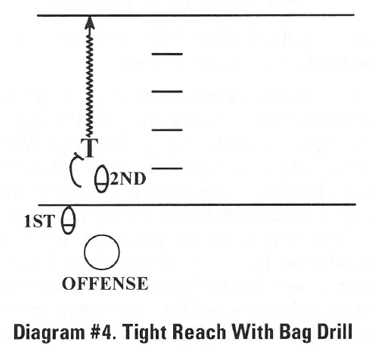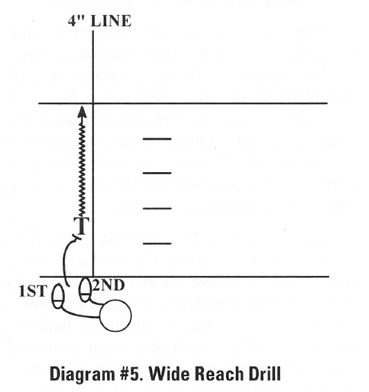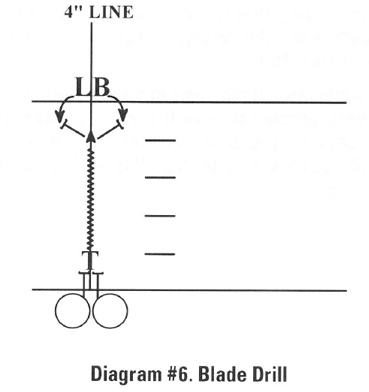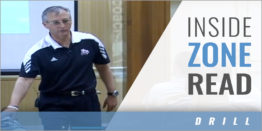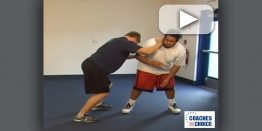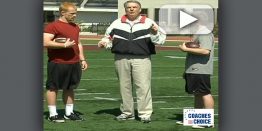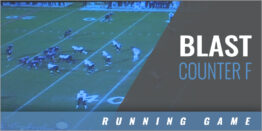| Offensive Line Drills and Fundamentals
It really is an honor to be here. This is your clinic. If you have a question, raise your hand, and I will I love my job. Can you believe I am paid to work on football all day? I do not have to teach classes, My presentation is nuts and bolts and fundamentals for offensive linemen. That is who we are, and Three people have had an input in my presentation. The first guy is Kirk Ferentz, our head football The second guy that had an influence is Joe Moore. Many of the young guys may not know who Joe The third person of influence is Joe Philbin. I do not think anyone in here will know who Joe Philbin Those three guys are the coaches all of this comes from. Also, there might be a few things that I I want to explain the how. I want to explain about the why, but we are going to mostly focus on Let me start with some general comments: We coach people and not positions. It is important that we do that. Not everybody has the same You may have to take a kid in a little earlier and keep him later and spend time with them. Sometimes we spend most of our time working with those good players, and we do not spend The next thing is to be simple. You are probably going to say there is no way they can be that It is important to teach what to do. What to do really amounts to assignments. Anybody can teach assignments. This guy blocks this guy. This other guy will block this other guy. That is important. The depth of this presentation is going to be teaching how to do it. The how is teaching the I plan to talk about six drills today. We only run four of the drills every day. We do the same drills I heard a quote this past summer at the Hall of Fame induction of Russ Grimm. Russ Grimm –Joe Moore on somebody else. You better want to move somebody off the ball. That is how we try to teach football. We are going to have that physical mentality. Our guys may not be the biggest and the fastest, but they will come after you. PRINCIPLES IN RUN BLOCKING What do we mean by square? We mean staying square to the line of scrimmage. We tell You do not want to get overextended and you want to keep your feet underneath you. We This is where we may differ from some of you. We want to get chest on chest. In run blocking, In pass blocking, it is just the opposite. In pass blocking, we want to have separation. I do We are trying to create muscle memory through repetition. We are trying to get our eyes, What I would like to spend the rest of my time on is talking about our five keys to success. FIVE KEYS TO SUCCESS Our players hear the same things repeatedly in our team meetings and in our practices. What do I mean by eyes on the aiming point? The eye is a muscle. You are going to train your At Iowa, we are a zone team and we run power. We will run the draw a little bit. Our first two What is that step for? A position step is to enable you to make your block. Our second step Some of our kids ask how big of a step they should take. We do not take a four-inch, a When I talk about vertical leverage, I am talking about the low man wins. Everybody that When I talk about horizontal leverage, I am talking about having inside leverage. We do not I have one of those real man's push mowers. It is not a self-propelled mower used by soft The last thing I want to talk about on this, you probably have not heard much before. I want STANCE AND STARTS We start just as you do on the very first day. We talk about the stance and the start. We Next, I want to go over a few drills. In the first drill, stance and starts, we have our five  foot down. We will do this drill with our right foot going first, and then we will turn it around and go with our left foot first. It takes just a couple of minutes to get this done. We do allow our center to take a little bit of a drop-step because of the proximity that he is to his block. He might look a little bit different on this drill. If we see a player not doing it right, we will do it over again. Not as punishment, we are going to do it because we are going to do things the right way every single time. We will not just move on to the next drill. We will do it right. CHALLENGE DRILL The next drill is the challenge drill. If you like football, you are going to like this drill This is just a 1-on-1 blocking drill. We tell the defensive lineman to get in a four-point We tell the offensive lineman to come off of the ball any way he wants to. We do not This is a great drill for us. Our kids want to do the challenge drill. We will film it and TIGHT REACH DRILL The tight reach is nothing more than a base block (Diagram #3). In a tight reach block, I do not want to lead with my hands. My hands naturally come up and under my body. We do
We tell the defensive lineman to get into a four-point stance. The reason we do that is We are coaching the first step as a position step and eyes at the aiming point. We want TIGHT REACH WITH A BAG We are going to do the same drill, but we are going to have a bag holder (Diagram #4).
We have to teach the bag holders how to hold the bag. We have the bag holder turn We coach our offensive lineman to take his right pad and put it right on the aiming point. WIDE REACH DRILL This drill is for blocking on the perimeter play or outside play (Diagram #5). In this drill,
Things do not always go as we plan them, or as we drill them. It is not always going THE BLADE DRILL The blade drill is nothing more than how we would teach the combination block (Diagram #6).
The main thing is to keep foot to foot and hip to hip. There should not be any space When we add a linebacker, we have him lined up about five yards from the defensive We were having trouble a couple of years ago of blocking second-level defenders. Our I found this drill that Joe Moore had taught him. We have a linebacker block drill, where we  and play in all-star games, but we have to coach the same things that you have to coach. If their eyes are not on the target, we have to coach that. If they do not have the proper footwork, we have to coach that. Our guys may be a little bigger than yours, but there is really no difference. The blocks drill is a fundamental drill. We are running our number one offense against We have a manager at quarterback and a manager in the tailback position. We will run the Everything that I have talked about today is all fundamentals. Ultimately, though, what it In summary, it has been an honor to be here. We are very humbled at Iowa. If there is |





